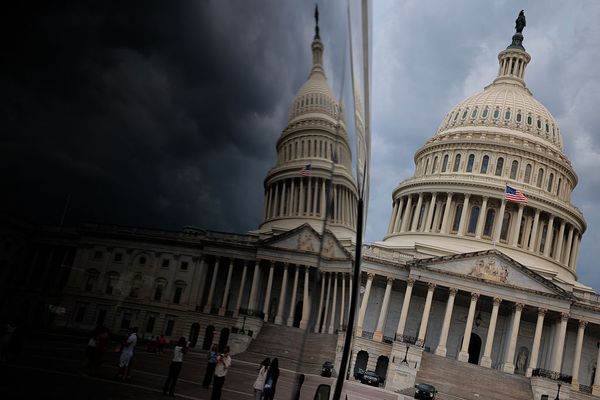
The major parties have pledged to give Australian renters a hand to enter the housing market, but experts warn their flagship policies will only help a narrow group of people.
So who will benefit from homebuyer help – and will more people be helped into the market?
Here’s what you need to know.
Who benefits from first home buyer help?
Most of Australia’s eight million renters will not benefit from first home buyer assistance proposals, according to analysis seen by Guardian Australia.
That’s because only a small proportion of renters enter the housing market each year – and they generally have the highest incomes, according to researcher Ben Phillips, an associate professor at the Australian National University’s Centre for Social Policy Research.
“It’s probably going to be benefiting people who are going to become homeowners anyway,” Phillips says.
Excluding pandemic lockdowns and the global financial crisis, about 100,000 households enter the housing market annually, according to home loan data from the last two decades.
Nearly half of all renters sit in the bottom 40% of income levels, compared with just one-fifth of first home buyers.
“If you’re in the bottom two quintiles of income, you’re probably not really going to have enough income to be servicing a mortgage, whichever way you go,” Phillips says.
“There’s not a lot that we’ve seen in the election campaign to really help those people, and they’re the people who really are struggling.”
That leaves nearly half the renting population, or four million Australians, beyond the reach of homebuyer help even before the new policies arrive.
What would the Coalition’s tax-deductible mortgage repayments do?
This scheme could benefit as many as 60,000 first-time buyers but will put more cash in higher earners’ pockets and may not bring additional people into the housing market, experts say.
The Coalition would let first home buyers deduct a portion of their repayments from their taxable income if they buy a newly built home, benefiting nearly 30,000 households annually on average – though the Housing Industry Association estimates it could be double that.
The HIA expects the scheme would see the existing pool of first-time buyers swing towards buying new builds. At present, first-time buyers tend not to buy new builds, preferring existing homes, but those that do are likely to be on higher incomes.
Top earners would particularly benefit from this policy as they pay higher rates of tax and therefore would get more money back from deductions.
They may even get the bulk of the benefits unless banks treat the deduction as a genuine increase in income and let lower earners borrow more, according to Matt Bowes, a housing expert at the Grattan Institute.
“It may not increase people’s borrowing capacity, it may just be giving them a free kick in that initial period of the loan,” he says.
Bowes says it’s not clear whether the policy would lift more people would into the market.
How would Labor’s government-paid mortgage insurance help?
This proposal could help up to 30,000 people enter the housing market every year, the government estimates, though a lack of income caps may see the benefits go to those who would have the means to enter already.
The expanded first home guarantee is open to all first-time buyers but is expected to be accessed by a “pretty narrow band of new first home buyers”, Labor’s housing minister, Clare O’Neil, has said.
By covering mortgage insurance and reducing upfront payments to a 5% deposit, the policy would let buyers get home loans sooner, permanently bringing forward the number of people who can buy, according to Peter Tulip, chief economist at the Centre for Independent Studies.
“It’s a big subsidy, so that would mean you would get an ongoing increase in the flow into home ownership,” he says.
But high earners would gain access to the expanded scheme if the government removed income caps, Bowes warns. The Coalition is proposing a smaller expansion that retains some income caps.
What about the Coalition’s super for housing?
About 160,000 extra people could enter the housing market in the first year of this policy’s operation, but Tulip estimates the boost would only be temporary.
First home buyers trying to secure a deposit would be allowed to put in 40% or no more than $50,000 of their own superannuation under the Coalition’s proposal.
That would more than double the number of first home buyers temporarily, before it returned to current levels, according to Tulip’s research on a similar scheme.
The Coalition’s housing spokesperson, Michael Sukkar, says the policy “will accelerate” homebuyers’ decisions.
Wealthy people and higher earners would see less benefit from super for housing as they may be better off leaving their retirement savings untouched, Tulip says.
“They can already save a deposit or get help from their parents, so they don’t actually need help from the government,” he says.
Who would benefit from Labor’s Help to Buy scheme?
This policy would make it permanently easier for some first-time buyers to make both the deposit and the repayment on their homes but will take in just 10,000 people each year for four years.
The plan, set to open later in 2025, was originally only for individuals on capped income and loan sizes, but Labor raised those caps in March’s budget.
Joint applicants and single parents earning $160,000 would be permitted to co-purchase homes alongside the government as costly as $1.3m in New South Wales.
The scheme would permanently increase the number of first home buyers year-on-year and could help renters whose incomes would otherwise be too low to enter the market, though increased caps could end up helping middle-income earners more, according to Grattan expert Bowes.
“With a scheme that has a limited number of places, you increase the risk that it becomes a lottery, and those low-income people who would most benefit are the ones who miss out,” he says.
And finally, what about the Coalition’s lower serviceability buffer?
Relaxed lending standards by lowering the serviceability buffer could temporarily help borrowers’ earnings go further and help them enter the market.
The opposition leader, Peter Dutton, has said a cut to the buffer would enable “tens of thousands more Australians” to get a home loan.
Economists agree more people could buy if regulators lowered that rate, which banks add to their lending interest rates when assessing a borrower’s ability to repay loans.
“It allows people to borrow more and if you can borrow more, then maybe you can out-compete other people in the home market,” Bowes says.
But like all of the buyer help policies on offer, looser lending rules would see growing numbers of people bidding ever greater amounts of money on a slow-growing supply of housing, worsening affordability, he says.
“Given high house prices, how useful is that to a broad range of people who are locked out of home ownership?”







